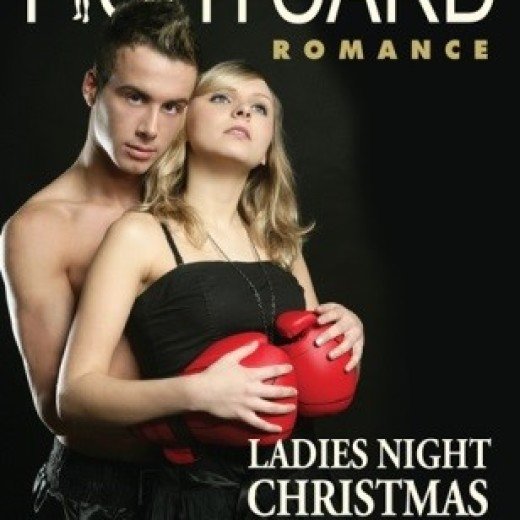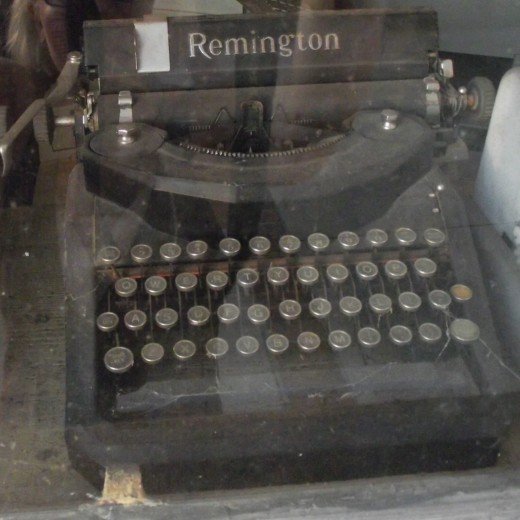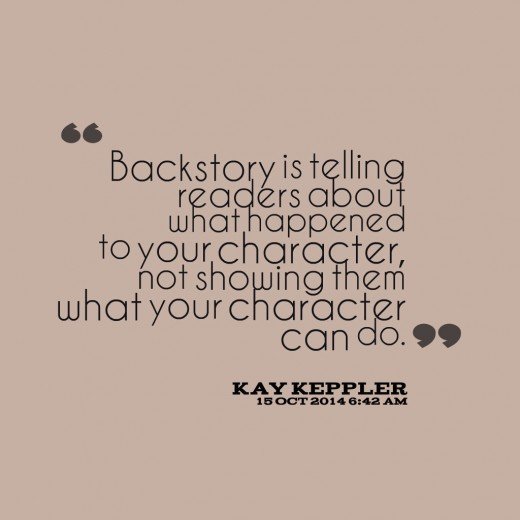Power Up Your Story with Character Four-Point Opposition by Michael Finberg
 Let’s welcome back Michael Finberg as he shares with us “Power Up Your Story with Character Four-Point Opposition.” Enjoy!
Let’s welcome back Michael Finberg as he shares with us “Power Up Your Story with Character Four-Point Opposition.” Enjoy!
***
Every great story needs conflict. Lots of it. The struggle between your hero and his main opponent will determine just how good that conflict will be, which will make or break your story. Both characters must play off their deepest strengths and weaknesses. This is why your characters’ backstory is so critical.
Did you know you can expand the conflict in your story even more with an advanced writing technique called Four-Point Opposition?
If done properly it can really turbo-charge the conflict and therefor the action in your book or series regardless of genre. Your reader will love it. This is a powerful technique pioneered by John Truby.
Start with your hero and main opponent. Then add two secondary opponents into the mix. All should have serious character flaws and deeply-held values that spill out and clash as the characters punch each other out.
That’s it.
Now your story can pinball between the four characters and the plot will unfold organically due to the psychological pressure released by this four-ring circus.
HOW TO ORGANIZE YOUR FOUR-POINT OPPOSITION
The optimum way to organize the four-point opposition is to make sure all four characters are in constant conflict with each other. You have six possible lines of conflict that can be ruthlessly employed.
Let’s look at a real-life example:
Harry Potter and the Philosopher’s Stone, Book 1 in the Harry Potter series
You have Harry Potter and Voldemort on one axis. They are the main opponents in conflict throughout the book and the entire series. They are caught in a life and death struggle.
Then there’s Snape and Draco Malfoy. It’s not a perfect four-point opposition as there’s really no serious conflict between Draco and Snape. Nor Draco and Voldemort.
The conflict between Snape and Voldemort is hidden because Snape is trying to protect Harry, which goes against Voldemort’s agenda.
Harry has serious conflict with both Snape and Draco. Snape is always humiliating Harry, and Draco is scheming to get Harry expelled from Hogwarts. These two sub-conflicts fuel much of the plot in the middle of the first book.
The Harry/Draco conflict axis pushes the plot quite fast. The duel-challenge by Draco leads to Harry discovering Fluffy who guards the trap-door to the stone.
Then Draco snitches on Harry during Harry’s dragon escapade with Hagrid, which leads to the climatic forest confrontation between Harry and Voldemort.
Snape’s constant clashes with Harry fools the reader because Snape is actually protecting Harry from Voldemort. This showcases another critical aspect of four-point opposition.
FLIP CHARACTERS
Make sure at least one or possibly two characters are flip characters. These characters fool the reader. They can be fake allies or fake opponents and can be constantly flipped to keep the hero and reader off balance.
You can even have minor Four-Point Oppositions interlocking with the major one.
In Harry Potter and the Philosopher’s Stone, Harry, Hermione, Ron, and Neville are constantly squabbling with each other and with Draco. These squabbles add texture to the plot and help pinball the story narrative further.
Near the end of the book Neville challenging Harry as Harry sets out to fight Voldemort leads to Gryffindor winning the cup after Voldemort is temporarily defeated.
I’m sure keen Harry Potter readers can spot more conflicts in Harry Potter and the Philosopher’s Stone that use the main and minor four point oppositions JK Rowling has skillfully woven into the story.
The key Harry Potter Four-Point Opposition really comes into its own by the later part of the series when it becomes clear that Draco’s not that big a player.
Drum-roll…
The real Four-Point Opposition is between Dumbledore, Voldemort, Snape, and Harry. All have major conflicts with each other as their backstories finally get filled out.
It’s this Four-Point Opposition that becomes the main anchor for the entire series. This deeper four corner conflict shows JK Rowling’s true skill at organic plot-weaving.
Dumbledore is teacher to Voldemort, Snape, and Harry. No less than three different wizards from three different generations. Dumbledore has some tough and complicated conflicts with all three.
Additionally, the secondary characters of Dumbledore and Snape are actually more complex and interesting than Harry or Voldemort, who in theory are the two main characters.
One last brilliant JK Rowling flip.
Did JK Rowling know she was creating a Four-Point Opposition in her story?
I doubt it, but she did understand the true power of backstory and created no less than two hundred characters, with journal notes filling fifteen to thirty pages for each character.
Can you find Four-Point Opposition in movies?
Star Wars had the potential for a great Four-Point Opposition with Obi-Wan, Darth Vader, Yoda, and Luke Skywalker, but it was never hashed-out properly.
Can you find Four-Point Opposition in TV?
Breaking Bad had a decent Four-Point Opposition with Walter White, his wife Skylar, Jessie Pinkman, and Hank Schrader.
Comedies thrive on Four-Point Opposition.
Analyze these historic shows from four different time periods.
I Love Lucy
All in the Family
Seinfeld
Girls
Can you think of more examples from books, TV shows, and movies you like?
Four-Point Opposition works best with book and TV serials. But single books and long movies are potentially good opportunities too. Post in the comments your thoughts.
Four-Point Opposition is a story puzzle challenge that’s waiting to be solved if you can create enough interesting characters with complex backstories.
How do you do this?
Start with a powerful story premise. A single line that captures the main conflict between the two main opponents in a unique story world.
Hint: combine in your premise ideas inspired from multiple genres. This story exercise is a crucial first step that will unleash the puzzle-solving process.
Think about this before you start all your backstory excavations. The premise will of course morph and unfold as you work the puzzle out and it will indeed, take some time. A lot of time, actually.
Nobody ever said quality writing was easy, but it can also be terribly fun. I wish you good luck on your writing adventure.
***
ABOUT THE AUTHOR
 Michael Finberg began writing when he was ten years old. After graduating from UC Berkeley in 1984, Michael went to Tibet. In 1990, he dropped out of society after a lucrative career in the financial markets. The result of his ten-year pilgrimage was a ton of poetry and two novels: Harvest of Gems and The Little Monk. Michael is currently working on Zone Girl, a dream fantasy series. The first installment should be completed by 2019. His website is http://www.spiritualscififest.com.
Michael Finberg began writing when he was ten years old. After graduating from UC Berkeley in 1984, Michael went to Tibet. In 1990, he dropped out of society after a lucrative career in the financial markets. The result of his ten-year pilgrimage was a ton of poetry and two novels: Harvest of Gems and The Little Monk. Michael is currently working on Zone Girl, a dream fantasy series. The first installment should be completed by 2019. His website is http://www.spiritualscififest.com.







I sense the potential of what you’re teaching here, but the concept is still new to me–and difficult. I could use a few more examples if you have the time. For example, is there an obvious example of four-point opposition in Shakespeare? How about in Hitchcock, in the Peanuts comic strip, and in a Biblical story such as Job)? I’ll try to analyze these myself, but I’d value your insights. In any case, thanks for the post. It’s a keeper.
Shakespeare is all about character study and drives less on plot. Plus the brilliant poetic execution of this character observation.
Many Shakespeare plays have multiple cross-cutting plots with huge character webs, but no real 4PO.
I don’t think any of Hitchcock’s movies have 4PO, but I’m not an expert on Hitchcock.
The Bible is just a long series of parables. The stories are often too short and not filled-up with enough long-running, criss-crossing plots with the same characters recycling and pin-balling against each other constantly.
My suggestion is to take a book series, movie or TV series you like and dig deep into the character web. Do four main characters and their perpetual conflicts anchor the on-going stories?
4PO is an advanced writing technique that most writers don’t really understand, but JK Rowling, Vince Gilligan, and many top comedy writers do.